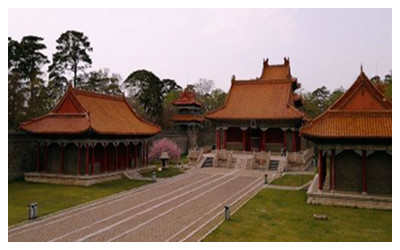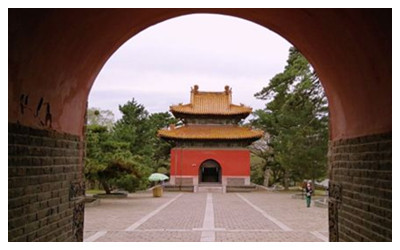Skype: neodalle-travel
Tel: +86 135 7447 2266
E-mail: sales@visitaroundchina.com
 Shenyang Fuling Mausoleum, aka East Mausoleum or Fuling Tomb, located in the eastern suburb of Shenyang City, Liaoning Province,is the mausoleum of Nurhachi (1559-1626), the founder of the Qing Dynasty (1644-1911), and his empress. Covering an area of 194,800 square meters (about 48 acres), it is a well-preserved tomb complex of the Qing Dynasty. It is now included in UNESCO's list of World Heritage Sites.
Shenyang Fuling Mausoleum, aka East Mausoleum or Fuling Tomb, located in the eastern suburb of Shenyang City, Liaoning Province,is the mausoleum of Nurhachi (1559-1626), the founder of the Qing Dynasty (1644-1911), and his empress. Covering an area of 194,800 square meters (about 48 acres), it is a well-preserved tomb complex of the Qing Dynasty. It is now included in UNESCO's list of World Heritage Sites.
Work on this majestic tomb began in 1629 and finished in 1651. It was built against the Tianzhu Mountain enjoying a grand topography, rich historic connotation and beautiful scenery. The tomb has an impressive simplicity and elegance which is unforgettable. Its natural layout can be divided into three parts from south to north.
The first part refers to the outside part of the grand red gate -the Frontispiece of Fuling Mausoleum. On both sides of the Frontispiece stand delicately carved Stone Lions, Huabiao (ornamental columns like those in Tiananmen Square), Memorial Archways and Stone Tablets. On these stone tablets are carved three kinds of Chinese characters in Manchu, Mongolian and Han instructing visitors to dismount and pass here on foot, or else be punished.
 Through the Frontispiece is the second part - the Sacred Way. Pairs of stone lions, horses, camels and tigers stand either side of the way. At the end of the Sacred Way is the famous 108-step stairway revealing the sovereign right of imperial power. The second part also includes a stele pavilion built in 1688.
Through the Frontispiece is the second part - the Sacred Way. Pairs of stone lions, horses, camels and tigers stand either side of the way. At the end of the Sacred Way is the famous 108-step stairway revealing the sovereign right of imperial power. The second part also includes a stele pavilion built in 1688.
Square CastleContinuing forward, you will arrive at the third part of Fuling Mausoleum. The castle-style architecture, called Square Castle, is the main construction of Fuling Mausoleum and is also the most characteristic of the architectural style of the Qing Dynasty. The Square Castle is about 5 meters (some 16 feet) high. On the four corners of the Castle stand small towers. The Bao Castle (Treasure Castle) is behind the Square Castle. Under the Bao Castle is the heart of Fuling Mausoleum - the mausoleum of Nurhachi and his wife.
Fuling Mausoleum was the ritualistic center for royalty during the Qing Dynasty. Thus we can say that it is not only an archetypal Chinese emperors' tomb, but also is the best eyewitness to Chinese history and culture.
Travel Tips
Add: 210, Dongling Road, Hunnan District, Shenyang
Entrance Fees: CNY 40
Opening Hours: Apr. - Oct.: 7:30 - 17:30; Nov. - Mar.: 8:00 - 16:30
http://www.qingfuling.com/
Tel: 024-88031478,024-88031568,024-88031748
 Ask Questions ?
Ask Questions ?